England lose two wickets in two balls as Ben Duckett and Ollie Pope are both caught for 0, falling to 13-2 with India taking control of the second Test on day two at Edgbaston.
FOLLOW LIVE: Men’s International Test Match Series – England v India
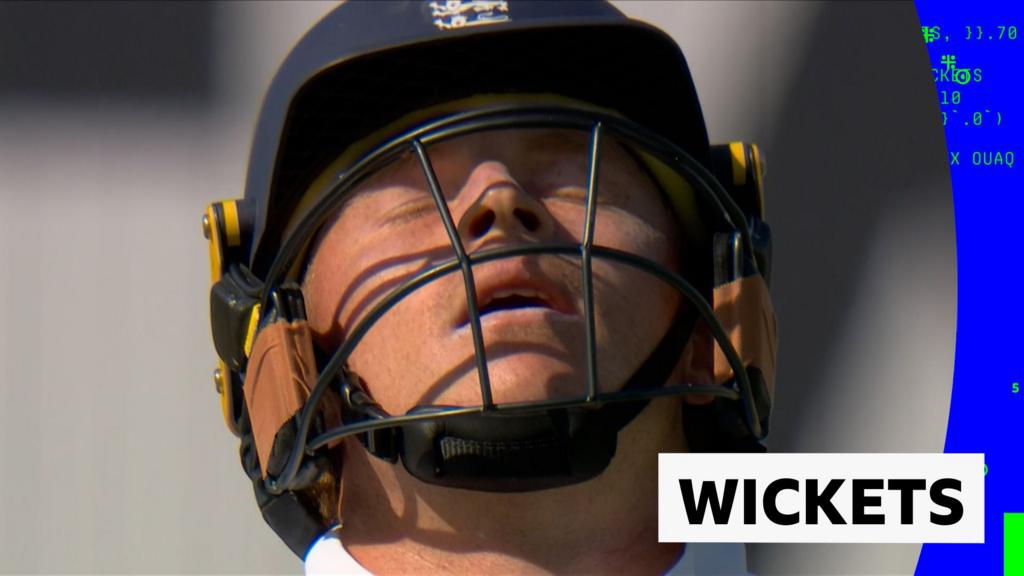
England lose two wickets in two balls as Ben Duckett and Ollie Pope are both caught for 0, falling to 13-2 with India taking control of the second Test on day two at Edgbaston.
FOLLOW LIVE: Men’s International Test Match Series – England v India
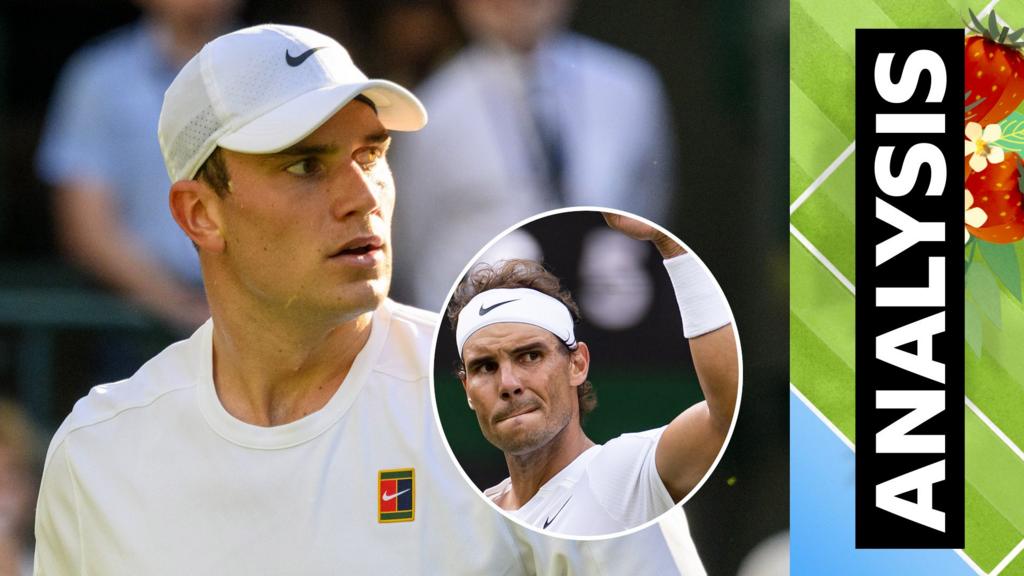
BBC Sport pundits Todd Woodbridge and Pat Cash explain how Jack Draper has developed a more agressive style of play, similar to that of Rafael Nadal, by trying to win more points closer to the net.
Watch live coverage from every court on BBC iPlayer.
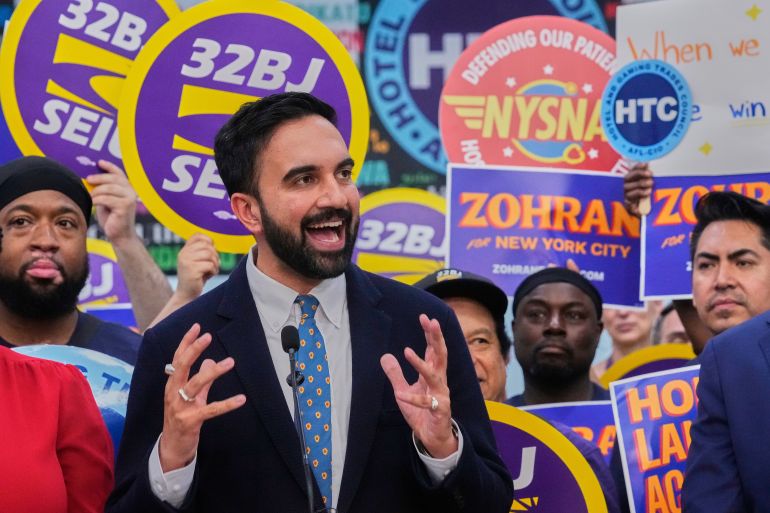
Early Saturday morning, New York City mayoral candidate Zohran Mamdani stepped on stage in the historically Black neighbourhood of Harlem.
His message was a familiar one: that he would be the best candidate to fight for the city’s marginalised and working classes.
“There have been many a question as to whether this city will simply become a museum of a place that once was — a museum of where working people could thrive,” Mamdani told the crowd.
On June 24, Mamdani scored an upset, winning New York City’s Democratic mayoral primary over frontrunner Andrew Cuomo, a former governor.
Just this Tuesday, the round-three results were released, showing Mamdani with a whopping 56 percent of the ranked-choice vote, dwarfing Cuomo’s 44 percent.
That dominant performance sent ripples around the United States political sphere. But it also led to scrutiny about where Mamdani’s weaknesses may lie.
Preliminary results suggest that Mamdani struggled in lower-income neighbourhoods like Brownsville and East Flatbush, where Cuomo took a marked lead.
In both of those areas, more than 60 percent of residents are Black. The neighbourhoods also share high poverty rates, with Brownsville at 32.4 percent and East Flatbush at 18.9, compared with the citywide rate of 18.2 percent.
One widely cited analysis from The New York Times found that 49 percent of precincts with a low-income majority tilted towards Cuomo, compared with 38 percent for Mamdani.
In precincts with a majority of Black residents, the pro-Cuomo number rose to 51 percent.
Those statistics raised questions about whether Mamdani’s promise to restore affordability in New York failed to resonate — or whether the numbers conceal a more complicated story.
Even before the primary results were called, there were some indications that Mamdani faced a steep challenge among lower-income and Black voters.
A Marist poll (PDF) from May found that 47 percent of respondents whose household income was less than $50,000 planned to vote for Cuomo as their first choice.
Mamdani was a distant second among the nine possible candidates, with 11 percent support. Meanwhile, he came in third place in the poll among Black voters, with 8 percent support to Cuomo’s 50 percent.
Experts say Cuomo had several factors weighing in his favour. Jerry Skurnik, a political consultant, pointed out that Cuomo was a well-known figure before June’s primary.
Not only was Cuomo a two-time governor, but he is also the son of a former governor.
His decades-long career in politics included stints in the cabinet of President Bill Clinton. Establishment figures like Congressman Jim Clyburn of South Carolina ultimately backed his campaign.
Mamdani, by contrast, is newer to the political arena: The 33-year-old has served in the New York State Assembly since 2020.
“Most people expected Cuomo to do well in the minority areas,” Skurnik said.
“He had name recognition, and he also had endorsements in most of those areas by local elected officials.”
Skurnik also noted that primaries typically attract older voters, who are considered a greater part of Cuomo’s voting bloc.
There, however, Skurnik points out that Mamdani defied the odds. A New York Times analysis suggested that voters in their 20s and 30s turned out in significantly higher numbers than for the 2021 mayoral primary.
That contributed to the highest overall Democratic primary turnout since 1989, when David Dinkins campaigned to become the first Black mayor of New York City.
“Younger voters came out in much higher numbers than anticipated,” Skurnik said. “Even in areas that Mamdani lost, he did by lower margins than people anticipated, paving the way for his victory.”

Other experts speculated that Mamdani, as a progressive candidate facing a centrist, might have been perceived as a riskier option.
John Gershman, a professor of public service at New York University, indicated that uncertainty can affect voter choices, particularly for those from vulnerable communities or precarious economic circumstances.
“For low-income families and the Black community, I think very much the calculus is not so much who’s the best candidate, but with which candidate am I risking the least, or am I least likely to lose?” Gershman said.
“In some ways, the devil you know is better than the devil you don’t.”
Gershman added, however, that Mamdani fit into a broader trend within the Democratic Party.
He pointed out that low-income voters leaned rightwards towards Republican Donald Trump in the 2024 presidential election despite Democrats having a stronger “anti-poverty element” in their agenda.
Trump even made headway among Black voters, though the majority remain Democrats.
Gershman tied the trend back to name recognition and media habits. More low-income voters, he said, get their news from legacy media sources like television and newspapers.
Cuomo relied more heavily on those outlets for publicity. While Mamdani did make a sizable TV ad buy, he also campaigned heavily on social media with videos that were more informal and conversational.
Some conservative commentators, however, seized upon The New York Times’ analysis to arrive at a different interpretation about why certain voters might perceive risk in Mamdani’s campaign.
Speaking to Fox News, Republican strategist Karl Rove cited the statistics to argue that low-income voters may fear the tax burden that might accompany greater anti-poverty spending.
“Low-income voters said, ‘You know what? We’re not dumb enough to think that this is all going to be cost-free,’” Rove said, taking a swipe at Mamdani.
“There aren’t enough rich people to pay all of the promises he’s making.”

But many experts say the broad voting trends fail to capture the complexity and overlaps of the communities they represent.
Michael Lange, a writer and political strategist who researched the primary, noted that many low-income communities in New York are Hispanic or Asian — demographics that gave strong backing to Mamdani.
“There were many lower-income neighbourhoods that Zohran Mamdani did well in, particularly in Queens, [like] Elmhurst and Flushing, that are almost exclusively Asian,” Lange said.
Those areas, he added, “verge on low income to working poor to working class”.
Activist and local historian Asad Dandia, who supports Mamdani, warned it would be wrong to see his campaign as solely drawing white or upper-class voters.
Rather, Dandia argued that Mamdani’s candidacy brought together a patchwork of diverse communities, from the Pakistani enclave in Brighton Beach to the Latino majority in Corona, Queens.
Even in some Black and low-income neighbourhoods, Dandia pointed out that Mamdani came out on top.
“How can you say that he’s not appealing to low-income voters when he’s winning Harlem?” Dandia asked.
But communities are constantly evolving, as are their politics. Juan Battle, a professor at the City University of New York, emphasised that every election cycle is different — and voter priorities can shift.
He pointed out that, during the last mayoral election, crime was the dominant theme. It helped buoy the current mayor, former police officer Eric Adams, to power.
“If this were happening four years ago, where crime was a big issue, I don’t think that Mamdani would have won,” Battle said. “Cuomo would have definitely won.”

Mandami is set to face Adams himself in November’s general elections. Cuomo, too, has not yet ruled out a third-party run on the final ballot.
Still, as the Democratic nominee, Mamdani has become the frontrunner in the race — and his campaign is likely to continue building its coalition, including through appeals to the demographics it may have lost in the primary.
That includes Black voters. But in order to succeed, Portia Allen-Kyle, the executive director of the racial justice group Color of Change, believes that Mamdani needs to understand the spectrum of viewpoints in the Black community.
“Black voters are not a monolith, as we saw that on [election] day,” she said.
Allen-Kyle believes authenticity and innovation will be key to reaching Black voters come November. She also warned against relying too heavily on the same popular shows where other politicians make appearances.
“In the same way you can no longer just go to churches to reach Black voters, we’re not all listening to The Breakfast Club or to Ebro in the Morning,” she explained, referencing two radio shows that Mamdani has appeared on.
As he continues to reach out to Black voters ahead of November, Mamdani has made allies with a civil rights icon: Reverend Al Sharpton.
At Saturday’s event, Sharpton himself reflected on The New York Times’ findings about Mamdani and the Black vote.
“There was a story in The New York Times, two days after the primary, about Black votes,” Sharpton told the crowd.
He pointed out that Mamdani could have chosen to appeal to other communities, where his support was stronger. But Mamdani’s “courage” had won his support.

Our appetite for data is growing fast. And so is the number of data centres filled with computer servers.
They store and process the data generated by our online activity, from social media to shopping to cloud storage.
And they consume massive amounts of water and electricity.
Big Tech companies are building data centres in places like drought-stricken Queretaro, in Mexico.
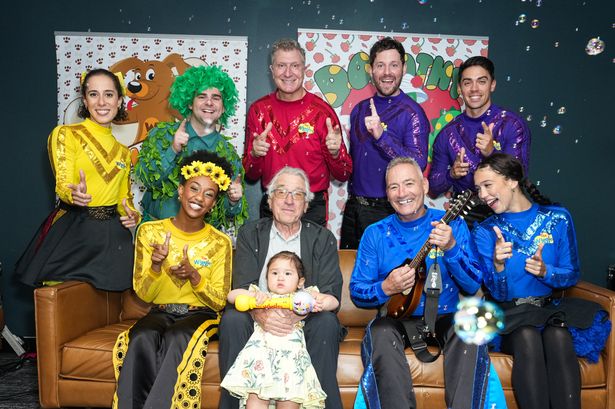
Robert De Niro, Dolly Parton and Jessie J are fans, they’re worth millions and play sell-out concerts around the world. The Wiggles – aka The Beatles for toddlers – are a preschooler’s entertainment juggernaut that has taken over the world.
They’ve got a new country album out, Wiggle Up Giddy Up, featuring two songs with the rhinestone queen herself, Dolly Parton. And tickets to their current world tour are hotter than an Oasis reunion gig.
They have previously sold out Madison Square Garden in New York for 12 days in a row and, ahead of this week’s show in the US, Hollywood legend De Niro, 81, was granted a backstage pass with his two-year-old daughter, Gia, to meet her idol – founder member, Anthony Field (Blue Wiggle).
Like most people over the age of five, De Niro didn’t have a clue about this global phenomenon until he had Gia with professional martial artist girlfriend Tiffany Chen, 45.
The Wiggles sang their classic banger Rock-A-Bye Your Bear for the veteran actor’s family, which drew a rare smile. And De Niro admitted: “I didn’t know of them until I started seeing them and my daughter loves to watch them… but they’re great!”
With the advent of YouTube and the arrival of their shows on Netflix, a new British audience is embracing The Wiggles.
When they came to the UK recently, Jessie J met them with her son Sky and was treated to some of the Tree of Wisdom’s viral TikTok dance moves.
They’re also part of a wave of Australian children’s TV, like Bluey, that is captivating British kids, giving them Aussie accents and pushing CBeebies off the map.
READ MORE: UK location that gets more UFO sightings than anywhere else on planet
Borkowski PR’s Gregor Cubie expects his 19-month-old to join the fan club soon, and wonders if ‘Aussie-ness’ is the magic ingredient wooing international audiences.
“In the same way that Bluey is almost universally popular and accessible, The Wiggles’ sheer Aussie-ness might work in their favour when it comes to their reputation,” he says.
But, scratch the surface, according to Gregor, and you’ll find a long-running supergroup, dogged by controversy, ill health and accusations of “going woke”.
One of Australia’s most successful exports, The Wiggles take it in turns with pop sensation Kylie Minogue and Hollywood actor Russell Crowe to top the Aussie rich list.
Majority owner Anthony is estimated to be worth £25m, on top of the £10 million a year the band rakes in from tours, TV shows, new releases, merchandise and sponsorships.
They have their own TV series Ready, Steady, Wiggle, have produced 62 studio albums, sold 40 million books, CDs and DVDS, and attracted more than 5 billion views on YouTube and 3 billion streams across various music services.
READ MORE: Inside the playboy princes’ Royal love train where Charles had secret tryst
They’ve been making ear-worm sing-a-long pop since 1991, when kindergarten teaching students Anthony and Jeff Fatt, who were members of the R&B pop band the Cockroaches, and got together with two fellow students – Murray Cook and Greg Page – in Sydney, to make an album of simple, catchy songs for pre-schoolers
After Anthony’s infant niece tragically died from sudden infant death syndrome, the Cockroaches disbanded.
One of the songs Anthony wrote, Get Ready to Wiggle, inspired the new band’s name because they thought “wiggling” describes how children dance.
“We met at university doing a course in early childhood – this connection with music and teaching is what became The Wiggles,” explains Anthony.
While The Wiggles has evolved since those early days, the four original members hold a special place in people’s hearts – Anthony and Jeff Fatt (Purple Wiggle), Murray Cook (Red Wiggle) and Greg Page (Yellow Wiggle). And their hits like Hot Potato and Fruit Salad, were toddler dance floor fillers for the next two decades.
READ MORE: ‘Gran’s saucy paintings were slammed – but we’re having last laugh’
While members have changed, the primary colours of red, yellow, blue and purple that they wear is no doubt the secret of the Wiggles’ success with the ankle biters.
In Hot Potato: The Story of the Wiggles 2023 documentary, Anthony says: “It doesn’t matter who wears the skivvies, as long as we reflect our audience and communicate with children.”
Like any band, they had to break America to go truly global – and when the Disney Channel played them four times a day to their 85 million subscribers, their success was meteoric. All of a sudden, they were playing 10,000 seater arenas.
PR, Gregor puts their success down to a “combination of their prolific output with its ceaseless ability to hypnotise toddlers”.
He adds: “Also, a less extreme version of the Royal Family’s ‘never complain, never explain’ approach. Instead of saying nothing, they say the bare minimum and carry on as if nothing happened.
“You rarely see naval-gazing and the consistency and popularity of their work keeps generations of kids coming back for more.”
While there aren’t many skeletons to rattle in The Wiggle cupboards, behind their happy faces and signature finger point, members have been dogged by setbacks.
Controversies include the Hot Potato incident two years ago, when a council in Western Australia played their famous song on loop to deter anti-social behaviour at a homeless shelter.
The Wiggles complained, saying their music should only be used to “spread joy and happiness” but the damage was done.
But the fact De Niro was happy to be pictured with The Wiggles is a massive endorsement.
“Robert De Niro seems increasingly like the kind of guy who considers how his every public appearance and utterance might affect his legacy, so it’s a pretty major stamp of approval that he’s happy to be publicly associated with the Wiggles. Fundamentally they are free of reputation risk,” says Gregor.
“The irony is that the Wiggles have had a few controversies which are fairly stereotypical of long-running bands – walkouts, inter-band marriages and divorces; allegations that a song is racially insensitive, accusations of going ‘woke.’ They’ve been ruthlessly parodied on 30 Rock and, of course, the Hot Potato incident was unpleasant.”
For members of The Wiggles, the squeaky clean expectations can be tricky.
“During my time in The Wiggles, I was out at a gig one night and I was having a drink, and the next day a newspaper reported: ‘The Wiggles member caught having a beer’, and that was a shock. I am an adult!” says Murray.
And doing 400 to 500 shows a year – cramming up to three gigs into a single day – took its toll on the original members, with Jeff, Murray and Greg retiring for health reasons in 2012.
A mystery illness forced Greg to leave in 2006. He was replaced by Sam Morans, but came back in 2012. Then he suffered a heart attack on stage during a 2020 reunion show. That same year, Murray had open heart surgery.
Revealing his own struggles, Anthony released a memoir Out Of The Blue last year, detailing the years of mental and physical health problems he’s suffered, including depression, undiagnosed ADHD and chronic pain.
Yet Field created a second generation of Wiggles with Simon Pryce (Red Wiggle), Lachlan Gillespie (Purple Wiggle) and the first female, Emma Watkins (Yellow Wiggle).
“We might be responsible for their first experience of music,” says Emma, speaking about their responsibility to their tiny fans
Sadly, trouble soon upended their paradise, as shortly after Yellow Wiggle Emma married Purple Wiggle Lachie, they divorced and she left the group not long after.
Another shake-up in 2021 saw 15-year-old Tsehay Hawkins becoming Yellow Wiggle.
Now 62, Anthony is the only remaining original Wiggle, in a group of eight performers – Tsehay, Lachlan, and Simon, as well as Caterina Mete, Lucia Field, Simon Pryce, Evie Ferris, John Pearce – who are as gender-diverse and racially-diverse as their millions of fans.
Costumed characters, played by the more junior Wiggles, include Dorothy the Dinosaur, Henry the Octopus, Wags the Dog, and Captain Feathersword.
While some of the newer members say their estimated £72,000 earnings are a fraction of the big bucks of the original members, they have given the group a bigger presence on social media, where the Tree of Wisdom (played by Anthony’s nephew, Dominic Field) regularly goes viral on TikTok, with his exuberant dance moves.
And, in recent years, they’ve been noticing something new – a generational crossover, as kids grow up, but remain fans.
Dorothy the Dinosaur is also now a DJ, who remixes the original Wiggles classics for the older audience. And they’ve been getting down with the cool kids – covering songs by Fatboy Slim, White Stripes and Tame Impala’s Elephant.
“We’re bringing back happy memories,” says Anthony. “And it’s a real privilege to do that.”
Altogether now, kids, wiggle, wiggle, wiggle!
The Monkees, 1960s – Four cute surfer boys Davy Jones, Mickey Donlenz, Peter Tork and Michael Nesmith running around in zany plots to brilliant pop tracks, in a sitcom that captured the spirit of the era.
The Banana Splits, 1970s – Four costumed animal characters who’d perform songs and comedy skits in a psychedelic world, was just as weird and fun as it sounds. The makers had clearly been on the wacky baccy.
Rainbow, 1980s – Presenter Geoffrey and his camp puppets Zippy, George and Bungle and hippy singers Rod, Jane and Freddy took us “Up above the streets and houses, Rainbow climbing high” every week. I still miss them.
Teletubbies, 1990s – Some called it the most disturbing children’s show on TV – but even now millions of babies are glued to repeats of these four tubby aliens, Tinky-Winky, Dipsy, Laa-laa, and Po, with coat hangers on their heads living on a mini golf course.
Zingzillas, 2000s – Puppet monkey band Zak, Tang, Panzee and Drum lived on a tropical island and made real music together and introduced tots to rock, soul, jazz and samba styles – along with some dodgy titles like Do You Didgeridoo?
READ MORE: Kickers’ ‘durable’ Back to School shoe range that ‘last all year’
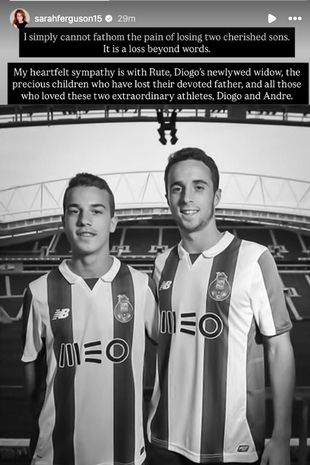
Sarah Ferguson has issued a direct message to the wife of Diogo Jota following his heartbreaking death, aged just 28. The Liverpool FC footballer and his brother tragically died after a fatal car crash in Spain, just ten days after he married his wife, Rute Cardoso.
Diogo and his brother Andre spun off the road before their car caught fire. One of the tyres had blown out while overtaking another car on the A-52, around 70 miles west of Valladolid, causing it to veer off the road. The incident occurred at around 12.40am. The blaze had spread to nearby vegetation which was eventually put out by firefighters, with the assistance from the Civil Guard.
Medical officials later confirmed the death of the two occupants of the car shortly after arriving on the scene. Tributes have flooded in for the Liverpool star and his brother. Adding to those messages of condolence in a touching statement shared on her Instagram, the Duchess of York said: “I simply cannot fathom the pain of losing two cherished sons. It is a loss beyond words.
” My heartfelt sympathy is with Rute, Diogo’s newlywed widow, the precious children who have lost their devoted father, and all those who loved these two extraordinary athletes, Diogo and Andre. May their light and legacy continue to inspire the world. “
The Duchess isn’t the only member of the Royal Family to issue a tribute. Just hours after Diogo’s death was confirmed, Prince William took to social media to issue a rare post. Taking to Instagram, the Prince of Wales signed off his post with” W”, signalling that it was him.
He penned:” As part of the footballing family, I am deeply saddened to hear of the passing of Diogo Jota and his brother. Our thoughts are with his family, friends, and all who knew him @LFC @Wolves. W. “

Since the news of Diogo’s death, a spokesperson for the Civil Guard in Zamora said:” The investigation into the crash is being carried out by Civil Guard traffic officers. We believe the car suffered a blowout from the marks on the road. The full police report once it is completed will be submitted to a duty court in Zamora which has launched an ongoing judicial investigation into this crash.
“That report is going to take time to complete, probably about four or five days but possibly longer. At this moment in time it is impossible to say at exactly what speed the car was going but that is something the Civil Guard investigators will be able to detail at least approximately in their final report from things like the skid marks. What I can confirm is that no other vehicle was involved and no-one else was hurt”.

Police who arrived at the scene had been unable to ID the pair, with only the licence plate from the car they were driving to go on. Diogo had married Rute, the mother of his three children, just ten days ago and said he was “the luckiest man in the world” after tying the knot. Tragically, Rute had to identify her childhood sweetheart following his death.
She told the police that Jota and his brother had planned to spend the night in Benavente and continue their journey on Thursday to reach Santander before catching a ferry to Portsmouth, according to reports in Portugal.
Psychological assistance was requested for Jota’s wife and the personal belongings that were saved from the Lamborghini fire were given to her. It was one of the brothers ‘ relatives who alerted them that they had not arrived in Benavente, and later, they verified in the documentation that they were Portuguese subjects.
Jota’s former team, Liverpool have also issued a moving statement. They said: “Liverpool Football Club are devastated by the tragic passing of Diogo Jota. The club have been informed the 28-year-old has passed away following a road traffic accident in Spain along with his brother, Andre.
” Liverpool FC will be making no further comment at this time and request the privacy of Diogo and Andre’s family, friends, teammates and club staff is respected as they try to come to terms with an unimaginable loss. We will continue to provide them with our full support. “
He joined the team from Wolves in 2020 and scored 65 goals during his 182 appearances for the Reds, including six last season when they won the Premier League title. Jota had also won the FA Cup and League Cup with Liverpool and the Nations League twice with the Portuguese national team.
Like this story? For more of the latest showbiz news and gossip, follow Mirror Celebs onTikTok, Snapchat, Instagram, Twitter, Facebook, YouTubeandThreads.